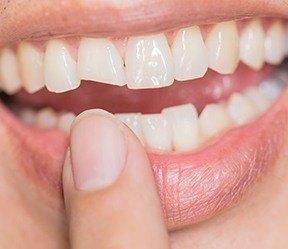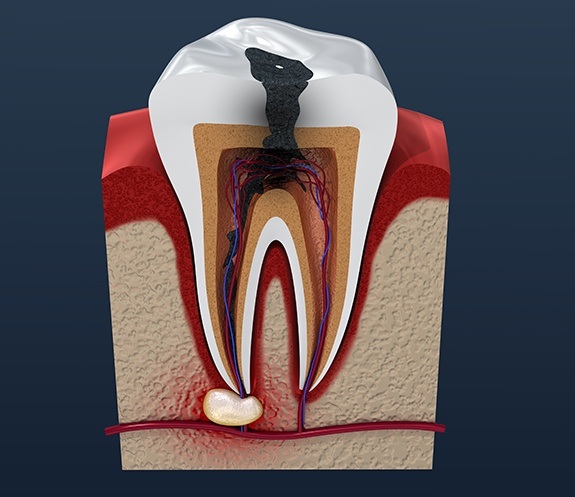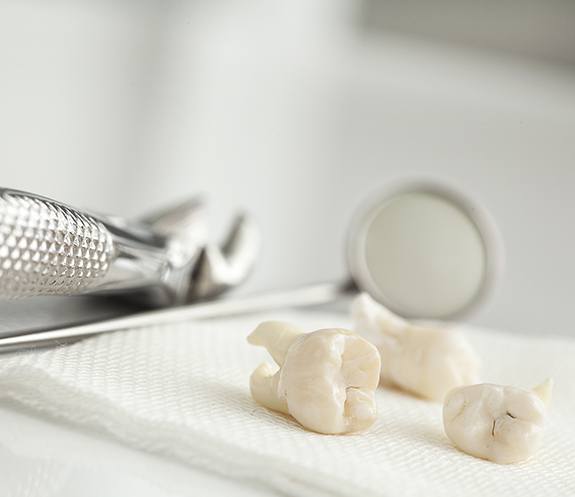Emergency Dentistry – North Bethesda, MD
Same-Day Appointments for Worst-Case Scenarios
Dental emergencies are extremely stressful to deal with, but having a dental office that you know you can trust can help. We recommend that you keep our phone number with you at all times so that you can get in touch with Aesthetic & Family Dentistry of North Bethesda whenever the worst happens no matter where you are. You won’t have to deal with the pain on your own for long; we offer same-day appointments for emergency dentistry in our North Bethesda, MD dental office for patients who need urgent care, so let us know immediately if you notice worrisome symptoms.

Why Choose Aesthetic & Family Dentistry of North Bethesda for Emergency Dentistry?
-
Same-Day
Appointments Available -
A Friendly, Experienced
Dental Team -
Dental Insurance
Accepted
How to Handle Common Dental Emergencies

Calling our dental office should always be the first step no matter what form your dental emergency takes. We’ll be able to give you advice to perform first-aid treatment over the phone, and we’ll be able to schedule an appointment as quickly as possible. Different emergencies will require different kinds of care, so you should be prepared to deal with as many different situations as possible. Below are some ways to deal with some of the most well-known dental emergencies.
Toothaches

A toothache might point to an infection of the pulp within the tooth, and that may mean that you’ll need root canal therapy in the near future. Ibuprofen and other over-the-counter medications can help with the pain. You can also hold a cold compress on the outside of your mouth for 10-minute increments.
Chipped/Broken Tooth

Find the part of the tooth that has broken off if you can. Gently rinse the broken pieces and bring them with you to our dental office. Check the tooth to see if there are any sharp edges. You can cover them with orthodontic wax in order to keep your lips and the inside of your cheeks safe from irritation.
Knocked-Out Tooth

Retrieve the tooth as quickly as possible. Only touch the biting surface; do not handle the roots. If you can’t put the tooth back in its socket, place it in a sealable container filled with milk or salt water. In order to keep bleeding to a minimum, apply a piece of sterile gauze to the area and apply a small amount of pressure.
Lost Filling/Crown

You can temporarily place a lost crown back on your tooth after you’ve rinsed it off. Some denture adhesive or toothpaste can help with stability. However, you will need a professional’s help in order to permanently repair or replace the restoration; otherwise you could run the risk of developing an infection.
Preventing Dental Emergencies

It’s not possible to prevent every emergency, but there are plenty of ways to reduce the chances of one happening. For one thing, you can protect your teeth from infection by maintaining good oral hygiene at home, maintaining a healthy diet, visiting our dental office for your biannual checkups, and staying hydrated. To reduce the risk of injury to your teeth, avoid using your teeth as tools, and try not to bite down on anything that’s overly hard.
The Cost of
Dental Emergencies

Once the initial panic of a dental emergency passes, you might start worrying about how much it will cost to treat it. The answer can vary quite a bit based on the situation, so we’ll need to examine your mouth first to determine the root of the problem and what sort of treatment is required. Then we can go over pricing details and go over dental insurance coverage and financing with you.
Root Canals

A root canal is performed when the nerve tissue inside your tooth has been infected or damaged, likely as a result of untreated tooth decay or severe dental trauma as the result of an accident. Despite its reputation, root canal therapy is a simple procedure that involves little discomfort. And as long as you take good care of the treated tooth afterwards, you can expect to keep it for many more years to come.
Tooth Extractions

A tooth extraction will typically be our last resort. When it comes to your natural teeth, no replacement can quite match the health benefits that they provide. However, sometimes a tooth is just too badly infected or damaged to be salvaged, and in such situations removing it might be the best option for preventing further oral health issues that could cause even worse damage to your smile. After the extraction, we can discuss having the tooth replaced with a dental bridge or a dental implant to make your smile whole again.
